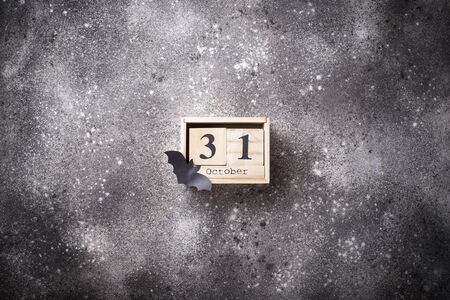Introduction: Death, Dreams, and the British Psyche
In the heart of Britain, a nation renowned for its rich history and ever-evolving cultural landscape, dreams of death hold a peculiar place within our collective consciousness. While the subject of death is often met with silence or stoic reserve in daily conversation, it finds vivid expression in the private theatre of our dreams. These nocturnal visions—sometimes unsettling, sometimes strangely comforting—serve as mirrors reflecting not only our personal anxieties but also the intricate tapestry of beliefs and customs that define modern British life. As the United Kingdom becomes ever more multicultural, the ways in which we interpret dreams of death have grown equally diverse. In this exploration, we delve into how such dreams act as silent witnesses to our hopes, fears, and the multicultural influences that shape our understanding of mortality. We seek to understand: what do these dreams reveal about who we are, both as individuals and as a society navigating the shifting sands of tradition and change?
2. Historical Perspectives: Death in British Folklore and Tradition
Throughout British history, death has never been a silent presence but rather an integral part of the collective imagination, woven into the very fabric of folklore, literature, and traditional beliefs. The dreams of the departed—those mysterious visitations from loved ones lost—have been interpreted in myriad ways, reflecting a society’s shifting relationship with mortality and the unseen world.
In ancient Britain, before the widespread influence of Christianity, the Celts believed that the boundary between the living and the dead was porous, particularly during festivals such as Samhain. Dreams of deceased ancestors were often seen as messages or warnings, a view that persisted even as Christian doctrine began to shape spiritual interpretations. The idea that dreams could act as bridges between worlds is echoed in centuries-old tales where spirits return to impart wisdom or seek closure for unfinished business.
Traditional British folklore offers a rich tapestry of symbols and superstitions surrounding death in dreams. It was commonly held that dreaming of death did not always foreshadow misfortune; rather, it might signal transformation or rebirth. In rural communities, omens within dreams—such as the appearance of white animals or hearing a banshee’s wail—were taken seriously, guiding decisions and rituals within families.
| Era | Belief/System | Interpretation of Death Dreams |
|---|---|---|
| Celtic Pre-Christian | Ancestral Spirits & Festivals (Samhain) | Dreams as messages from ancestors; guidance or warnings |
| Medieval Christian | Purgatory & Divine Signs | Dreams as signs from souls seeking prayers or resolution |
| Victorian Era | Mourning Rituals & Spiritualism | Dreams seen as visits from departed loved ones; comfort or closure |
| Modern Britain | Psychological & Multicultural Influences | Dreams interpreted through personal symbolism or cultural tradition |
The literature of Britain further immortalises these beliefs. From Shakespeare’s haunted Hamlet to Dickens’ spectral visitations in “A Christmas Carol,” stories have long reflected anxieties and hopes about what lies beyond death’s veil. Even today, family lore often includes tales of prophetic dreams or strange coincidences following a loss, suggesting an enduring respect for the mysteries that dreams of death continue to hold within British consciousness.

3. Multicultural Britain: Diverse Interpretations of Death in Dreams
Within the tapestry of modern Britain, dreams of death and the dead are woven with threads from a multitude of cultures. In examining these nocturnal visions, it becomes clear that interpretations are as diverse as the communities themselves, shaped by heritage, faith, and generational memory.
South Asian Perspectives
Among Britain’s South Asian communities, dreams of death can be both foreboding and comforting. For many Hindus, a dream of a deceased ancestor may signal ancestral guidance or a reminder of familial duties. In Islamic tradition, common among British Pakistanis and Bangladeshis, such dreams may be seen as spiritual messages—sometimes urging prayers for the departed soul, or prompting reflection on one’s own life and actions.
African and Caribbean Traditions
In African and Caribbean households, ancestral presence in dreams is deeply respected. For many, particularly those tracing roots to West Africa or Jamaica, dreaming of the dead is not always an omen but rather an invitation to heed ancestral wisdom. The dead may appear to deliver warnings or blessings, and their appearance is rarely taken lightly—often prompting rituals or prayers to honour their message.
Eastern European Insights
Eastern European immigrants bring their own rich traditions. In Polish folklore, for instance, dreaming of the dead might be regarded as a sign to visit their grave or light a candle in remembrance. Russian and Romanian beliefs often cast such dreams as reminders to settle unresolved matters or seek forgiveness—either for oneself or on behalf of the departed.
Shared Themes and Unique Nuances
Despite these varied interpretations, some common threads endure. Across cultures in Britain, dreams featuring the dead often serve as bridges between worlds—linking the living with their ancestors, prompting remembrance, and inspiring acts of devotion. Yet each community brings unique nuances to these dreams; what might be seen as a warning in one tradition could be interpreted as reassurance in another.
The Living Tapestry
Ultimately, the interpretation of death in dreams within multicultural Britain reflects not only personal anxieties or hopes but also the collective values and spiritual practices carried across generations. As Britain continues to evolve, so too do these dream traditions—ever adapting, yet rooted in respect for those who have gone before.
4. Dream Analysis: Common Motifs and Their Meaning
Within the tapestry of British society, dreams of death are woven with threads of diverse cultural motifs and age-old symbols. These nocturnal visions, whether unsettling or quietly contemplative, often contain recurring themes that echo not only our personal experiences but also the collective psyche shaped by the multicultural landscape. Understanding these motifs is essential to interpreting the psychological and spiritual significance of death-related dreams among Britain’s many communities.
Recurring Motifs and Their Symbolism
Death dreams commonly feature a handful of striking images and scenarios. The table below outlines several prevalent motifs, their typical interpretations, and subtle variations found across cultural backgrounds in Britain:
| Motif | Common Interpretation | Cultural Nuances in Britain |
|---|---|---|
| Seeing a Deceased Loved One | Yearning for connection, unresolved grief, guidance from the past | In South Asian families, often seen as ancestral blessings; among Christians, may represent spiritual comfort |
| Attending Ones Own Funeral | Transformation, fear of change, self-reflection | For Caribbean Britons, can signify the closing of one life chapter; for older generations, often evokes traditional mourning rituals |
| Being Chased by Death | Anxiety, avoidance, guilt or pressure to confront unresolved issues | Younger Britons might link it to career stress; immigrants may associate it with homesickness or adaptation struggles |
| Resurrecting from Death | Renewal, hope, second chances | Popular in African diasporic stories as a symbol of resilience and rebirth |
| Dark Water or Shadowy Figures | Uncertainty, subconscious fears, the unknown | In Islamic dream traditions, may be interpreted as a spiritual warning or call for prayer |
The Psychological and Spiritual Layers
While these motifs may at first seem universal, their meanings are subtly shaped by both personal background and communal beliefs. For instance, a Scotsman dreaming of a funeral procession through misty moors might interpret the scene through a lens of ancestral memory and stoic acceptance, whereas a recent migrant from the Middle East may see a similar dream as a message to honour family ties far from home. In both cases, the dream acts as a bridge between individual psychology and wider cultural identity.
Interpreting the Messages
It is important to remember that death-related dreams rarely predict physical demise. Instead, they often mirror internal transitions—a letting go of old habits, relationships, or beliefs to make way for new growth. In the context of multicultural Britain, these dreams can also reflect the complex dance between tradition and modernity, belonging and individuality.
Guidance for the Dreamer
For those who experience such dreams, reflection is key. Ask yourself: What changes am I facing? What parts of my heritage influence my response to loss and renewal? By honouring both personal intuition and the wisdom embedded in our shared cultural narratives, we may find that even dreams of death carry seeds of healing and transformation.
5. Contemporary Attitudes: Taboo, Grief, and Healing
In the tapestry of modern British society, dreams of death occupy a curious and often unsettling space. Despite the nations deep-rooted traditions and evolving multicultural ethos, conversations about death remain largely taboo, whispered about rather than openly discussed. For many Britons, admitting to dreaming of the dead may evoke discomfort or even superstitious worry, a legacy of both Victorian reserve and more ancient folkloric fears. Yet, beneath this surface lies a quietly shifting landscape, where psychological insight and cultural sensitivity are beginning to foster new perspectives on these nocturnal encounters.
The Weight of Taboo
British reserve is famed the world over, and nowhere is this more evident than in attitudes towards death. The idea of discussing ones own mortality—or the imagined passing of others—can feel almost indecent, a breach of unspoken social codes. Dreams of death, in this context, are often kept private, shared only with trusted confidants or not at all. This reticence can lead to feelings of isolation for those seeking understanding or solace, compounding the emotional impact of such dreams.
Dreams as Portals to Grief
However, there is a growing recognition among therapists and spiritual advisors that dreams of death may serve a meaningful role in the grieving process. In a country where many now come from backgrounds that blend Christian, Muslim, Hindu, and secular beliefs, interpretations of death dreams can be as varied as the population itself. For some, these dreams offer a chance to say goodbye to loved ones lost; for others, they act as metaphors for personal transformation or the end of a chapter in life. The dream world, with its own logic and symbolism, becomes a safe harbour where emotions too difficult for waking life can be faced and processed.
From Fear to Healing
In recent years, initiatives such as bereavement cafes and community support groups—often hosted in local churches, mosques, and community centres—have begun to encourage more open dialogue around death and mourning. Within these supportive spaces, Britons from all walks of life are finding that sharing dreams of the dead can be an important step towards healing. By voicing these nocturnal narratives, individuals not only honour their own grief but also discover that they are far from alone in their experiences.
Personal Growth through Reflection
Ultimately, the act of reflecting on dreams of death may offer more than just comfort; it can serve as a catalyst for personal growth. In navigating the delicate interplay between tradition and modernity, British dreamers are learning that such visions—however unsettling—can illuminate hidden fears, unresolved emotions, and even untapped reserves of resilience. By embracing rather than shunning these dreams, individuals may find themselves better equipped to move forward with renewed understanding and compassion, both for themselves and for others who walk beside them in grief.
6. From Nightmare to Narrative: How Britons Share and Make Sense of Death Dreams
Within the tapestry of British society, dreams of death rarely remain silent spectres haunting the night. Instead, they often find their way into daylight, woven into conversation, storytelling, and artistic expression. In a land shaped by centuries of oral tradition and literary prowess, Britons have long turned to narrative as a means of making sense of lifes mysteries—including the unsettling experience of dreaming about death.
The Art of Conversation: Sharing Dreams Across Cultures
In homes from Glasgow to London, it is not uncommon for family members or friends to gather over tea and share their most vivid or disturbing dreams. For many in Britain’s multicultural communities, recounting a dream about death becomes both a personal catharsis and a communal ritual. These conversations offer comfort, invite interpretation, and allow individuals to place their own anxieties within the broader context of shared human experience. Through gentle humour or solemn reflection, Britons often transform night terrors into stories that bind people together.
Storytelling as Healing: Folklore and Modern Narratives
The British Isles boast a rich heritage of ghost stories and tales of the afterlife. Today’s dreamers continue this tradition by turning nightmares into narratives—whether through spoken word, written memoirs, or digital storytelling platforms. Multicultural influences enrich these tales; Caribbean communities might interpret death dreams as ancestral messages, while South Asian Britons may view them through spiritual or religious lenses. By telling these stories, individuals not only process their own emotions but also contribute to a living archive of collective wisdom.
Artistic Expression: Transforming Fear Into Beauty
Dreams about death often inspire creative works—paintings, poetry, music—that help Britons explore their feelings in ways words alone cannot capture. Local art collectives, multicultural festivals, and online exhibitions provide safe spaces for people to share their visions publicly. Through art, private fears become communal artefacts; what once haunted the mind in solitude now invites empathy and dialogue. In this process, death loses some of its power to frighten and instead becomes part of the ongoing story of life in modern Britain.
Ultimately, whether through conversation around the kitchen table or the brushstrokes of a canvas in an East London studio, Britons find meaning in the mysterious language of death dreams. By giving voice to these nocturnal encounters—shaped by diverse cultural backgrounds—they forge connections that bridge generations and traditions. In turning nightmare into narrative, they remind us all that even our darkest dreams can illuminate paths toward understanding and unity.


